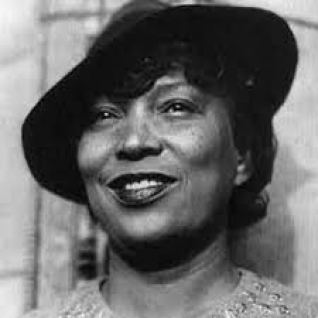
I very much like the idea of Oxford University Press’ “A Very Short Introduction” series. They can provide a good starting point for a subject with suggestions for further reading to add more depth than these short overviews can do. Established in 1995, there is now the staggering figure of over 450 volumes. I have only read a couple and neither of these were complete introductions to me- they were on subjects I knew something about or were very interested in. To test the effectiveness of this series maybe I should be selecting something completely alien to me, such as “The History Of Chemistry” or “Geopolitics” but life is probably too short for even these very short introductions when it comes to some areas.
In this volume, within 5 chapters and an epilogue, Rutgers University Professor of English, Cheryl A Wall gives a good overview of the period of Black American cultural history which has been termed “The Harlem Renaissance”. I was very interested to see this title amongst the new “VSI” Oxford publications (alongside Learning, Blood, Translation, Public Health and Indian Cinema). I knew of and have read (although many years ago) some of the poetry of Langston Hughes, who I assumed would be one of the key figures in this analysis. I hoped I would read about Zora Neale Hurston whose 1937 novel“Their Eyes Were Watching God” very much impressed me (not knowing then that Wall is a Hurston expert) and looked forward to reading about such luminaries as Louis Armstrong, Bessie Smith, Duke Ellington and Josephine Baker all of whom I thought were probably of the right time period.
Writers Langston Hughes and Zora Neale Hurston
The actual starting point of this “Renaissance” is up for debate. Certainly the return of African-American soldiers from World War I, bringing back considerable life experiences would have paved the way somewhat as would the experimental “live while you can” atmosphere of the more liberal early 1920’s. Wall, however cites a dinner in 1924 at the Civic Club in Manhattan, an integrated event hosted by the editor of “Opportunity” magazine which was seen as the “debut of the younger school of Negro writers” alongside established African-American intellectuals such as W.E.B Du Bois.

W.E.B Du Bois
Wall tracks this movement which became centred (although not exclusively so) on Harlem which had both a large vibrant African-American population and a number of nightspots (eg: Cotton Club) which attracted a white audience keen to see what Harlem had to offer. The Renaissance also spread across to France (especially Paris and Montmartre where ex-soldiers settled to create a burgeoning club and night life scene, assisted by the more relaxed attitudes towards race by the French and dynamic performers such as Sidney Bechet and Josephine Baker.
Sidney Bechet & Josephine Baker, causing a stir in France
It also was not just an urban movement, Wall argues, as it took in the American South where a number of these “New Negro” writers originated and which (in Zora Neale Hurston, amongst others’ case) provided the inspiration for work. The rhythms of dialect, the words of spirituals and the music of the blues all had a part to play.

Marcus Garvey
Wall’s emphasis is on the writers and poets but the trailblazers I had hoped to read about were all present and correct. She’s also illuminating on the role of early civil rights leaders such as the aforementioned Du Bois and especially Marcus Garvey, who I’d heard about but was never sure how he fitted in. He seems to have been a fascinating individual who stirred emotions both positive and negative and is someone I would like to find out more about. So for that reason, if no other, Wall has certainly achieved the aim of the Very Short Introductions as far as I am concerned as it has got me to want to read more. I might have liked a more detailed further reading list but that once again can be a springboard for Amazon suggestions. This is a very short introduction which did not feel in any way sketchy or rushed and is a good way into the subject.

The Harlem Renaissance is published by Oxford University Press in . I would very much like to thank the publishers for the review copy.




